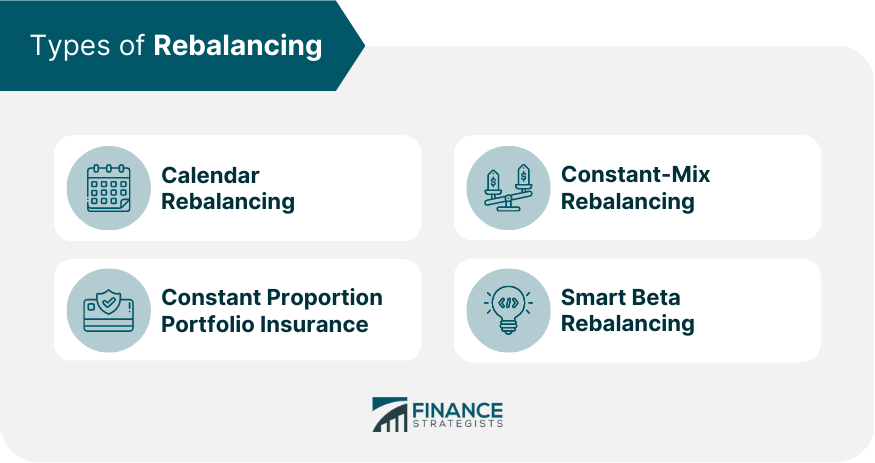Annuity vs. 401(k)| Which Is Better for Retirement? Are you trying to decide between an annuity and a 401(k) for your retirement savings? You’re not alone. Many people struggle with the decision of which option is best for their future financial security. It’s important to understand the differences between these two options so that you can make an informed choice about what works best for you. In this article, we’ll break down all aspects of annuities vs. 401(k)s, including contributions, tax benefits, withdrawal rules, and more. Keep reading to find out everything you need to know about choosing the right plan for your retirement needs.
Definition of annuities
An annuity is a type of investment that gives you a steady stream of payments over time in exchange for a lump sum payment or a series of payments made up front.Annuities can be used to provide income during retirement as well as other times when regular cash flow may be needed. There are several different types of annuities, each with their own advantages and disadvantages.
Immediate annuities are purchased with one large upfront payment and start paying out right away, either on a fixed schedule or on a variable schedule depending on the type of immediate annuity chosen. Deferred annuities accumulate money through investments and then begin paying out at an agreed-upon date in the future. Variable annuities involve higher risk but also have the potential for greater returns than traditional fixed-rate deferred annuities.
Annuitization is another option available to those who purchase an annuity, which allows them to convert their accumulated savings into guaranteed lifetime income streams starting immediately or sometime later down the road. This means you do not need to worry about outliving your savings since you will receive income regardless if your account balance runs dry. With all these options, it’s easy to see why many people choose to use an annuity as part of their retirement plan. As we move on to discussing the benefits of owning an annuity, it’s clear there are many advantages to this type of investment vehicle.
Annuity vs. 401(k)| Which Is Better for Retirement?
Benefits of Annuities
Ah, the annuity. It’s like that old friend you can always count on: it will never let you down when you need a guaranteed income in retirement. Not to mention its potential for growth and tax-deferred status. Here are just some of the amazing benefits this faithful companion provides:
Guaranteed income: Annuities provide guaranteed income throughout your retirement years, so you won’t have to worry about running out of money or relying solely on Social Security.
Potential Growth: With an annuity, your money has the opportunity to grow over time while still providing a steady stream of income.
Tax-Deferred Status: All earnings from an annuity are tax-deferred until withdrawn, meaning more money in your pocket.
Death Benefits: In case something unforeseen were to happen to you, certain types of annuities offer death benefits that can be passed on to loved ones after you’re gone.
Flexible Payment Options: Depending on what type of annuity product you purchase, there may be options for flexible payments, which could make budgeting easier in retirement.
Those who are making financial plans for the future should not ignore the many advantages that annuities offer. They are one tool among many that can prove invaluable as part of a comprehensive retirement plan. As we move onto our next topic, let’s look at all the different types of annuities available today and how they might fit into your long-term goals.
Types of Annuities
Annuities are a type of financial product that provides income over time. There are several types of annuities, each with their own unique features and benefits. Variable annuities have flexible options for how they can be used to generate income, and account balances fluctuate based on the underlying investment performance. Fixed annuities offer guaranteed payments but don’t typically build up wealth very quickly. Immediate annuities begin providing payments right away, while deferred annuities allow you to save money before receiving regular payments in retirement. Indexed annuities combine aspects of both variable and fixed annuity products by offering some growth potential through investments linked to major stock market indices as well as protection from losses due to market downturns.
The next section will focus on the definition of 401(k) plans and how they differ from other types of retirement accounts.
Definition of 401(k)
In prehistoric days, retirement planning was often thought to be a pipe dream. Fortunately, that is no longer the case with the advent of 401(k) plans. A 401(k) plan is an employer-sponsored retirement savings account in which taxes on funds are not paid until they are withdrawn. It provides employees with an easy and convenient way to save for retirement while also receiving tax advantages from their employers.
These are the basics of a 401(k):
Contributions come directly out of your paycheck before taxes.
Employers may match contributions up to a certain percentage.
Withdrawals prior to age 59 1/2 can incur penalties.
Funds grow tax-free until withdrawal.
The maximum contribution per year is set by the IRS.
It’s important to understand all aspects of a 401(k) when deciding how much money you want to contribute each month or year. Having knowledge of the rules and regulations surrounding this type of retirement account will help ensure that it’s used appropriately throughout one’s lifetime. Additionally, understanding its benefits helps provide peace of mind during these uncertain times as we look ahead towards our future financial security. To move forward confidently, let’s take a closer look at the key benefits associated with having a 401(k) plan.
Annuity vs. 401(k)| Which Is Better for Retirement?
Benefits of a 401(k)
The 401(k) is an attractive retirement savings option for many individuals. This type of plan offers significant tax benefits as well as the potential to receive employer contributions. In addition, a 401k may help workers save more efficiently for their future by providing them with a secure way to invest in their retirement income.
One of the major advantages of saving money through a 401(k) is that employers often match employee contributions up to a certain percentage or amount. This can be especially beneficial when trying to build long-term wealth and financial security. Employer matches provide employees with additional funds they may not have been able to get without contributing to their retirement plans. Furthermore, these contributions are usually made with pre-tax dollars, which further reduces taxable income while helping people save more money for retirement faster than if they had contributed after-tax dollars directly into another form of investment account such as an Individual Retirement Account (IRA).
Another advantage of using a 401(k) is its contribution limits. Individuals can contribute up to $19,500 each year ($26,000 if over 50) before taxes toward their retirement fund. Although this might seem like an unattainable goal at first glance, it can easily be achieved by taking advantage of any employer matching program and setting aside a portion of every paycheck towards one’s retirement fund. Additionally, some employers offer catch-up contributions, allowing those aged 55 and older to add even more money into their accounts on top of what is already allowed under regular contribution limits—making now the perfect time for anyone looking forward to retiring soon to start investing in their future today!
Overall, there are numerous advantages associated with utilizing a 401(k) when planning for one’s retirement, including simpler access to investments due to its convenience and flexibility, generous contribution limits, and added benefits from employer matches. These factors make it easier than ever before for individuals looking ahead towards retirement years down the line to begin preparing financially right away.

Contribution Limits for 401(k)
When it comes to 401(k) contributions, there are rules and regulations that must be followed. Knowing the contribution limits of a 401(k) plan is essential for those looking to maximize their retirement savings potential. Here’s what you need to know about the 401(k) contribution limits:
1. Employees can contribute up to $19,500 annually in 2020; this includes any wage reductions or salary deferral contributions your employer may allow as part of their 401(k) plan.
2. Catch-up contributions are available for those over 50 years old. – employees age 50 and older can make an additional ‘catch-up’ contribution of up to $6,500 per year on top of their normal annual limit.
3. High earners have lower limits: if you earn more than certain IRS thresholds (currently $285,000/year), then your total employee and employer contributions cannot exceed the lesser of 100% of compensation or a specified dollar amount ($58,000 in 2020).
4. Spousal IRAs offer additional options: if one spouse has no access to an employer-sponsored retirement plan such as a 401K, they may be able to contribute directly into a spouse’s IRA account with income limitations similar to regular individual IRAs.
These basic rules and regulations keep everyone within the boundaries set by law when it comes to contributing money to a 401(k) plan. With these guidelines understood, we can now explore different investment options associated with this type of retirement account.
Investment Options for a 401(k)
When it comes to retirement savings, 401(k) plans offer a variety of investment options. These investments are typically managed by professional asset managers and may include stocks, bonds, mutual funds, ETFs (exchange-traded funds), and other types of investments. Contributions to a 401(k) plan have contribution limits set by the Internal Revenue Service (IRS) each year and also provide tax benefits for those who contribute. For employers offering an employer match option, this can be especially beneficial as they are able to double their contributions.
In addition to the traditional investment options offered through a 401K plan, there are also alternative investments such as real estate or private equity that can add diversification and potentially higher returns over time. However, these investments come with additional risk, so investors must weigh all factors before making any decisions about which type of investment is right for them.
Overall, both annuities and 401(k)s provide different ways for individuals to save for retirement but offer distinct advantages and disadvantages depending on individual needs and preferences. The next section will discuss the tax implications of each plan in more detail.
Tax Implications for Each Plan
When it comes to taxes, annuities and 401(k)s have different implications. An annuity is taxed differently than a 401(k) due to its unique structure as an investment product. Contributions to an annuity are not tax deductible, but the money that has been invested grows tax-deferred until it’s withdrawn in retirement. Annuity taxation begins when withdrawals start, where they’re subject to ordinary income taxes.
401(k) plans are funded by pre-tax dollars through salary deferral contributions up to certain limits set by the IRS. Distributions of those funds are then taxable upon withdrawal in retirement, along with any earnings on investments within the plan. Employers may also provide matching contributions, which can help employees save more for retirement while reducing their current income taxes too.
Both annuities and 401(k)s offer advantages over other types of investing products when it comes to taxes, so understanding how these two plans are taxed is important before deciding which one is right for you. With this knowledge about the differences between their respective tax treatments, we can now look at the pros and cons of each plan.
Annuity vs. 401(k)| Which Is Better for Retirement?
Pros and cons of each plan
Like two sides of the same coin, annuities and 401(k)s offer different advantages. As an illustration of this fact, we can examine their respective pros and cons:
Annuity Pros:
Guaranteed income for life
Tax-deferred growth potential
Flexibility in terms of payment options
401(k) Pros:
ability to contribute pre-tax money towards the plan
potential for higher returns than traditional savings accounts or CDs
Employer matching contributions are available on certain plans.
Annuity Cons:
High fees are associated with some plans (especially variable annuities).
Penalties for early withdrawal if funds are needed before retirement age
Lack of liquidity due to long lock-in periods on many products.

401(k) Cons:
Limited investment choices within most employer plans
Possible exposure to greater market risk than fixed annuities provide
Restrictions on withdrawing funds prior to reaching retirement age without penalty (typically 59 12 years old)
These examples demonstrate that both annuities and 401(k)s have distinct strengths as well as drawbacks. In comparison to one another, it becomes important to consider all factors when selecting which type of plan best suits individual needs. Moving forward, comparing the costs and charges between these two types of plans provides further insight into making an informed decision.
Comparison of Fees and Charges
When considering an annuity vs. a 401(k), fees and charges should be taken into account. An annuity typically has a variety of fees associated with it, including surrender fees, mortality and expense risk charges (M&E), and administrative or management fees. The amount of these fees depends on the provider and type of contract purchased. 401(k)s also have various costs associated with them that must be factored in when evaluating which plan is better for you. These include investment fees, annual administration fees, record-keeping expenses, trustee fees, and transaction costs.
In comparison to an annuity’s fee structure, 401(k)s usually have lower costs overall due to economies of scale; however, each plan differs depending on your individual circumstances. It is important to do research on both plans prior to investing so you can make an informed decision based on your own financial goals. Before deciding between an annuity or a 401(k) plan, it is wise to compare the cost structures carefully and consider how they align with your long-term objectives.
It’s essential to understand not only what kinds of investments are offered within either option but also the related costs associated with those investments as well as any other potential charges throughout their lifecycle. Moving forward, we’ll examine the distribution rules for both plans; understanding these restrictions will help determine which one best suits your retirement needs over time.
Distribution Rules for Both Plans
To continue the discussion of fees and charges, transitioning to the distribution rules for both plans is like taking a trip down memory lane. Annuities and 401(k)s are two sides of the same coin when it comes to how you can withdraw your money.
When it comes to annuities, there’s no set withdrawal rule as each policy dictates its own terms regarding withdrawals. However, if you want to take out more than 10% of the funds in an annuity before reaching retirement age, hefty surrender charges may apply. On top of that, some policies will even require you to pay taxes on any earnings taken out prior to retirement.
On the other hand, with 401(k)s, you have much more flexibility when it comes to making withdrawals since they’re governed by ERISA (the Employee Retirement Income Security Act). Generally speaking, distributions from a 401(k) plan cannot be made until after age 59 1/2 without incurring a 10% penalty tax. In addition, withdrawals must begin at age 70 1/2, and failure to do so could lead to you paying significant penalties or fines from the IRS.
In light of these differences between annuities and 401(k)s, one should consider their individual risk profiles for each plan before deciding which option best suits them.
Risk Profiles for Each Plan
When it comes to retirement planning, one of the most important considerations is risk. An annuity and a 401(k) both have different types of risks that investors need to be aware of when deciding which plan best suits their needs.
The primary risk associated with an annuity is longevity risk. This means that if you outlive your expected lifespan, there may not be enough money in the account to cover living expenses during retirement. Additionally, annuities come with investment risk, meaning that they’re subject to market fluctuations just like any other type of investment. To reduce this kind of risk, many people opt for fixed or index-linked annuities instead of variable ones.
A 401(k) also carries its own set of risks related to the stock market and economic performance. Because contributions are invested in stocks and bonds within the fund, there’s always the possibility that these investments could lose value over time. In addition to market risk, 401(k)s also carry inflation risk due to changes in prices over time, along with withdrawal penalties for early withdrawals from accounts.
Risk management should therefore be at the forefront when considering either an annuity or a 401(k) as part of your retirement strategy. Understanding each type’s unique risks can help investors make informed decisions about how to structure their portfolios for long-term success. With careful consideration given to both plans’ potential rewards and pitfalls, individuals can ensure they’re making smart choices for their financial future. Moving on, let’s compare the death benefits and inflation protection features offered by each option.
Compare Death Benefits and Inflation Protection Features
Death benefits and inflation protection features are two key elements of annuities versus 401(k)s that must be weighed when making an investment decision. Like a lightbulb turning on in the dark, these differences shine through to provide clarity for investors.
A major difference between the death benefit of an annuity and a 401(k) is who receives the funds upon the investor’s passing. With an annuity death benefit, any designated beneficiaries will receive payment from either the remaining account balance or a specific death benefit amount previously set by the policyholder. On the other hand, with 401k plans, all assets within the account belong solely to its owner up until their death; then they pass directly to whatever beneficiary was named by them on record prior to their passing.
Another distinction between these two types of investments is their respective inflation protection features (or lack thereof). Annuities often offer riders that guarantee minimum payments even if there is significant inflation over time. This feature may help protect against income losses due to rising costs throughout the retirement years. In contrast, since 401(k)s are subject to market fluctuations and do not have this type of rider option attached, they cannot promise such protection against inflationary impacts.
Without question, both products carry advantages as well as drawbacks depending on one’s individual financial situation and long-term goals, something that should always be taken into consideration before committing to either form of investing. It can be helpful to speak with your financial advisor about what product would best fit your needs while taking into account the potential risks associated with each option.

Regulation and Guarantee Limitations
Therefore, while death benefits and inflation protection features are important considerations for retirement savings, the regulatory protections and guarantee limitations of annuities and 401(k)s should also be taken into account. Annuity regulations differ from state to state with regards to minimum guarantees regarding contract values and interest rates. Generally speaking, these contracts provide a guaranteed stream of income over a period of time in exchange for an upfront lump sum payment or a series of smaller payments. In addition, annuities typically offer some form of death benefit that will pay out upon the policyholder’s passing.
On the other hand, 401(k) restrictions limit contributions as well as withdrawals prior to age 59 1/2 without incurring significant penalties. While most plans do grant participants access to loans against their own funds within certain limits, it is not possible to withdraw money early without penalty unless it qualifies under specific conditions such as permanent disability or financial hardship. Additionally, 401(k)s may have different levels of employer matching funds depending on the type of plan chosen by the company; however, they generally don’t provide any sort of death benefit like an annuity does.
Given the differences between these two options when it comes to regulatory protections and guarantee rules, it becomes important to consider which option best suits your particular needs before making any decisions about retirement savings strategies. With this knowledge in mind, you can make an informed choice about how to secure your financial future.
How toe Choose The Right Option
Choosing the right retirement plan for your long-term financial goals can be a difficult decision. Annuities and 401(k)s are some of the most popular options available, but it’s important to understand the differences between them before making a final choice.
Annuities provide an income stream over time but have certain drawbacks, such as high fees and commissions, that can detract from returns. With a 401(k), contributions are made on a pre-tax basis and grow tax-free until withdrawal. The main downside is that there may be restrictions or penalties for trying to access funds early.
When deciding which option is best suited for you, consulting with a qualified financial adviser can help ensure you make the right decision. They will take into account factors like age, current savings, expected social security benefits, and other sources of income in order to create a personalized strategy that meets your needs. Seeking professional advice could go a long way towards ensuring successful retirement planning.
Frequently Asked Questions
What Is the Best Retirement Plan For Me?
Deciding which retirement plan is right for you can be a daunting task. It’s like trying to find your way through a maze—it’s easy to get lost and overwhelmed. But with the right amount of research, patience, and understanding of each option available, you’ll find yourself in a much better position when it comes time to retire.
So what are the options? When looking at retirement planning, there are two main types of plans: annuities and 401(k)s. Each has its own advantages and disadvantages that need to be considered before making any decisions.
An annuity is an agreement between you and an insurance company where they promise to pay out a certain sum over a period of time after you have retired. Annuities provide guaranteed income and protection against inflation but come with high fees, so they may not always be the best choice if you’re looking for short-term returns on your savings. On the other hand, 401(k)s allow money to accumulate tax-free while employed, allowing savers to build up their pension pot quickly without having to worry about taxes until withdrawal age arrives; however, most employers offer limited choices when investing in these plans.
When choosing between an annuity or 401(k), consider how long you plan on working before retiring; look into the fees associated with each option; decide whether or not you want access to all your funds from day one; think about how much risk versus reward you’re comfortable taking; and ensure that any rollover options offered by either plan fit into your overall retirement goals. With such careful consideration of both plans’ strengths and weaknesses, finding the perfect retirement plan for your individual needs will become easier, no matter which route you choose!
How Does My Current Income Affect My Contribution Limit For A 401(k)?
When it comes to retirement planning, one of the most important questions is how your current income affects your contribution limit for a 401(k). Your contributions to a 401(k) are limited by the amount you earn in a year, and this can have an impact on what sort of savings plan would be best for you. It’s important to understand how much you can contribute, given your current income, so that you can make informed decisions about setting up a retirement plan.
Income plays an important role in determining how much money someone can contribute to their 401(k) each year. The Internal Revenue Service (IRS) sets limits based on earned income as well as age, which means that those with higher incomes will generally be able to contribute more than those who don’t make as much. For example, if you’re under 50 years old and earning $50,000 per year, then you’ll be able to contribute up to $19,500 annually towards your 401K.
It’s also important to keep in mind that there may be other factors that affect your contribution limit, such as employer matching funds or special tax incentives. Additionally, different types of accounts like traditional IRAs or Roth IRAs may offer different levels of contribution limits depending on certain criteria, such as eligibility requirements or filing status. Understanding all these nuances can help ensure that you maximize your potential savings while still adhering to any applicable limits set by the IRS.
No matter what type of retirement account you choose, understanding how various features—including your own income—affect contribution limits is essential for making sure that you end up with the best possible outcome from a financial standpoint. With knowledge about the rules governing contribution limits and other key details, individuals can better prepare themselves for their golden years ahead.

How Much Can I Expect To Pay In Fees For An Annuity?
Investing in an annuity can be a great way to save for retirement and ensure financial security. But with any investment, there are fees associated that should be taken into account when making your decision. In this article, we’ll explore the different costs associated with annuities and how they impact your bottom line.
When it comes to annuities, there are several types of fees you may encounter depending on the type of product you choose. These include surrender charges, mortality and expense fees, administrative fees, sales loads or commissions charged by brokers or advisors, as well as other miscellaneous expenses such as premium taxes. All of these factors must be considered when looking at the total cost of owning an annuity.
It’s important to remember that not all annuities have the same pricing structure. Some may come with higher upfront costs but lower ongoing maintenance fees, while others may offer more competitive rates up front but require larger payments over time. It’s also worth noting that many providers will offer discounts if you purchase multiple products from them, so it’s always best to shop around before committing to one particular company or plan. Ultimately, understanding the various fee structures is key to finding the right fit for your individual needs and budget.
No matter what type of annuity you’re considering investing in, make sure you fully understand all of the costs involved before signing on the dotted line. Be sure to read through any documents thoroughly and ask questions about anything that isn’t clear—doing so could help you avoid costly mistakes down the road!
What Happens To My Annuity If I Move To A Different State?
When it comes to annuities, one of the most important things to know is what happens when you move to a different state. Depending on where you are moving, there could be significant changes in terms of taxes and regulations that may affect your annuity payments. Therefore, it’s important to understand how this transition will impact both your rights as an investor and the overall performance of your annuity policy.
The first thing to consider when looking at moving states with an annuity is taxation rules. Different states have different rates for income tax, estate tax, and capital gains tax, all of which can apply differently to individuals depending on their residency status. As such, understanding these differences before making any moves is essential in order to ensure that you don’t end up paying more in taxes than necessary after relocating. Additionally, certain states offer special exemptions or incentives for those who own annuities within their borders, so researching these benefits should also be taken into account prior to a move.
Finally, if you do decide to relocate with your existing annuity contract intact, then make sure you contact the insurance company responsible for administering the policy beforehand in order to get approval from them and avoid any potential issues down the line. Knowing the specifics of how each individual state handles its citizens’ investments can help reduce confusion and simplify the process of transitioning between residences while keeping your investment secure throughout the entire journey.
How Does The Death Benefit Of An Annuity Compare To The Death Benefit Of A 401(k)?
When it comes to death benefits, annuities and 401(k)s are two popular retirement options. But how do these investment vehicles compare when it comes to the payoff after an individual passes away? This article explores the differences between annuity and 401(k) death benefits in order to provide readers with a better understanding of which option may be right for them.
An annuity’s death benefit is usually outlined in its contract at the time of purchase. Generally speaking, when someone dies while they still have money invested in their annuity, any remaining funds will go to their designated beneficiary. Depending on the kind of annuity purchased by the individual, this could mean that a lump sum payment or series of payments are made out to the beneficiary.
On the other hand, if someone has money invested in a 401k account, then those assets can also be distributed as part of their estate upon death. However, unlike an annuity, where beneficiaries typically receive all of the remaining balance at once (or over time), distributions from a 401(k) must be taken within five years, according to IRS regulations. While there are exceptions depending on circumstances, most individuals must take the required minimum distributions during each year until all assets have been disbursed from the deceased’s account.
In comparing both types of accounts, the key difference lies in how quickly funds must be paid out—either immediately or stretched over five years—and who receives what percentage based on terms detailed in either type’s agreement prior to passing away. It is important for potential investors considering investing in either an annuity or 401(k) plan to read through the available information carefully before making a decision so they understand what happens should something unexpected happen, like death, while investments remain active.
Conclusion
The decision about which retirement plan to choose can be a difficult one. It is important for each individual to weigh the pros and cons of both an annuity and a 401(k) before making their final choice. An allegory I often use to illustrate this point is that of a fork in the road: it may seem like you have two paths ahead, but if you take time to look at each path closely, you may find there are many more options than what first meets the eye.
When deciding between an annuity and a 401(k), consider your current income level, any fees associated with either option, how death benefits differ, and whether or not your annuity will still work if you move states. Each person’s financial goals and abilities should also affect their ultimate decision when choosing a retirement plan. Taking all these factors into account can help ensure that whoever chooses wisely can maximize their savings while providing them with security throughout their post-career years.
At the end of the day, whichever route you decide on—an annuity or 401(k)—make sure it fits your unique needs best!












Leave a Reply